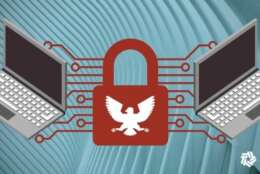Cybersecurity
-
Biden administration eyes mandates under new effort to improve critical infrastructure cybersecurity
The administration will develop performance goals for critical infrastructure cybersecurity as part of an effort emphasizing voluntary collaboration, but current and former officials see the potential for federal mandates amid a concerning rash of cyber attacks.
July 28, 2021 -
Experts from the Cybersecurity and Infrastructure Security Agency, State Department, Defense Logistics Agency, Microsoft Federal and ServiceNow will explore how innovation and security can happen in tandem.
July 27, 2021 -
Fergal McGovern ran these texts through an algorithm-based program that analyzes written text for complexity and understandability.
July 27, 2021 -
Deep in the Defense Department, a group is partnering with industry to create a window into the cyber vulnerabilities of the defense industrial base.
July 26, 2021 -
With the increase in data demands and rising threats, government data centers face massive expectations to scale and rework their data infrastructure.
July 26, 2021 -
End points – smart phones, tablets, notebook PCs, even desktop PCs – form employees’ entry points to networks, applications and data. The rise in remote working and teleworking has made end points particularly attractive to cyber hackers, especially using ransomware attacks delivered through phishing campaigns.
July 26, 2021 -
Michael Acton, vice president of Solutions at ARRAY Information Technology, joins host John Gilroy on this week's Federal Tech Talk to discuss the challenges of managing data for the Department of Defense.
July 26, 2021 -
As cybersecurity attacks interrupt government services at the state and municipal levels, governors are calling on the National Guard for help.
July 23, 2021 -
Operators of networked 3D printers aren't always securing the machines or the files that drive them, according to the DoD Office of Inspector General.
July 23, 2021 -
The Office of Personnel Management, as it plans to “sprint toward the cloud,” has selected its provider in order to, on two fronts, shed its legacy data center and legacy network.
July 22, 2021 -
A new bill in the Senate would require federal contractors, agencies and critical infrastructure operators to report cyber intrusions within 24 hours.
July 22, 2021 -
The Defense Innovation Unit whittled its search for new or innovative cyber technologies from 20 options to six, testing two bleeding edge cyber tools to improve the security at the endpoints.
July 21, 2021 -
This content is sponsored by Fortress Information Security. On July 13th, The Global Business Alliance (GBA), which represents 200 major international companies with significant operations in the United States announced the formation of GBA Sentinel,…
July 20, 2021 -
In today's Federal Newscast, the federal government could have multifactor authentication and encryption technologies fully deployed across its networks within six months.
July 20, 2021 -
Ransomware and cyber ransom attacks are gaining attention as they continue to wreak havoc on critical infrastructure and important networks. The attacks are likely part of the new normal when it comes to living in an increasingly connected cyber world, but that doesn’t mean that businesses and government agencies are helpless.
July 19, 2021















